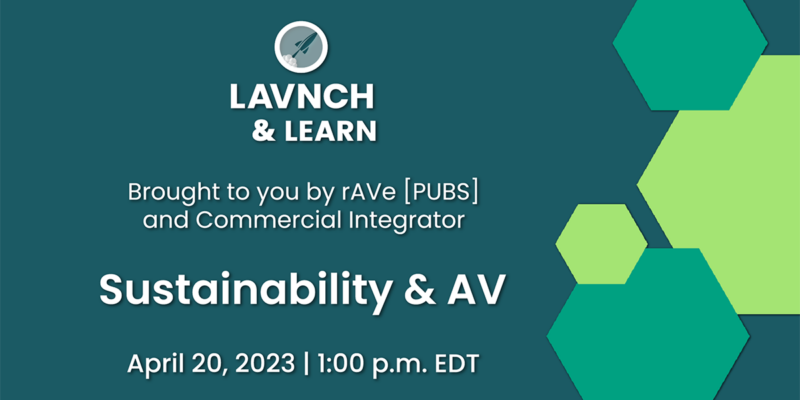InfoComm: Re-engaging in Sustainability Through Disruption
 Now that InfoComm 2013 is over and done with, and I’ve had a chance to think about what I saw, my main takeaway was how exhibitors and attendees have, for the most part (certainly not everybody), pushed the sustainability conversation to the rear. Has our industry reached a point of sustainability fatigue? Or has it become so commonplace — assumed and accepted — that it has escaped our lexicon?
Now that InfoComm 2013 is over and done with, and I’ve had a chance to think about what I saw, my main takeaway was how exhibitors and attendees have, for the most part (certainly not everybody), pushed the sustainability conversation to the rear. Has our industry reached a point of sustainability fatigue? Or has it become so commonplace — assumed and accepted — that it has escaped our lexicon?
At this past show, I purposely didn’t ask manufacturers questions regarding energy-savings features or other green initiatives, expecting them to point these out and tout them as key differentiators against their competitors. Yet I got nothing, or maybe a slight head nod toward a small kiosk buried in the back of the booth.
Now, maybe these companies just assumed I knew what they were up to, seeing as I write frequently on the subject for a whole host of outlets. However, I got a deeper sense that the past couple years have taken a toll on the sustainability efforts of some. This may be a result of the poor financial environment we’ve been living through, or it may be something deeper.
Research has shown that when a large organization or company launches into a major effort, such as sustainability, it normally starts with high expectations. Early positive results often fuel momentum.
But what happens when the low-hanging fruit is gone or the new-car smell has worn off? Mainly, we see a tired lack of interest, or attention is easily diverted to something else. We tend to focus on other things and lose our drive to carry through. It takes truly disruptive innovation to prevent this malaise, and transformation into what Chris Laszlo, associate professor of organizational behavior at Case Western’s Weatherhead School of Management, calls a “flourishing enterprise.”
Laszlo, a corporate sustainability expert, offers ideas about next steps in two books he wrote, Embedded Sustainability: the Next Big Competitive Advantage and Sustainable Value: How the World’s Leading Companies Are Doing Well by Doing Good. What he is keen to point out is something I think many attendees and exhibitors at InfoComm 2013 had forgotten: Sustainability is increasingly a profit center for corporations (read as “our clients”). Where I think the challenge lies is the perception that to generate profit — to achieve the triple bottom line (people, planet, profit) — it will cost them too much.
Many companies, integrators, and consultants I spoke with indicated that for them, it is hard to play to the social and environmental side of the equation without sacrificing the economic side. This couldn’t be more misguided, in my opinion.
As the country and economy slowly digs out of the deep recession, corporations, government entities, education sectors, and entertainment companies, among others, are coming out smarter and more penny-wise than pound-foolish. We need to find the disruptive innovations that can differentiate ourselves and show how what our industry has to offer can help clients be smarter, more sustainable, AND more financially secure, all by using the tools we have, or by rethinking how we approach solutions. By doing this, we too become smarter, more sustainable, AND more financially secure.
A major way to accomplish this is by providing real-world metrics and examples, and sharing that information with our clients. Marketers of consumer goods are hitting the airwaves and launching smartphone apps to tout the latest green benefits of consumer products. And consumers are listening — even if they don’t think their small part will play a major role. These consumers are bringing this attitude to work with them and expecting that the solutions we provide fit within a framework they have become accustomed to at home.
But you can’t just simply do sustainable technology; you need to inform clients about it and understand the benefits to them. And most importantly, you need to live sustainably yourself — both personally and within your company. Laszlo identifies this change as disruptive, and the pathway companies take as innovation. He also manages to connect the flourishing of corporations in this sustainable environment with a (non-religious) spirituality for wellbeing. Unless we live and breathe such a vision, we cannot inspire our clients and other stakeholders to commit to doing well and truly reaching the triple bottom line.
I would love to hear from you about how you keep engaged in sustainability at your AV company. How does it factor into your business model? How do you engage your clients?
This column was reprinted with permission from InfoComm International and originally appeared here.





